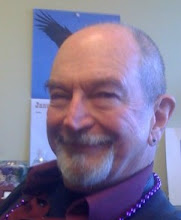Tuesday, March 25, 2008
Beginnings
Monday, March 24, 2008
CHANGE ADVOCACY
History flows over with examples of men and women who were expelled and exiled from social institutions great and small because they clashed with the institutional ethos and process. Socrates was not destroyed because he was an evil man, but because he was so good a man that his fellow Athenians could not tolerate his presence on the streets of
Institutions do not welcome men and women of insight, energy and vision - men and women who are not in complete accord with the institution and its stated and unstated aspirations. The individual who is conscious of the dichotomy is immediately thrust into an adversarial position - but the individual has needs, hopes, and competencies that achieve their greatest actuality only in the context of the institution.
The individual, conscious of conflict with the institution, survives by being a change advocate, prospers by making change, and sometimes by being changed. The question assumes that institutions, among other problems, are hostile to change agents, have cruel and divisive defense strategies, and can exercise powerful force against the individual who seeks to alter what the institution perceives as the unalterable. The powerful forces may be sledgehammer-like, or of a silk and velvet texture, but in a practical personal sense, there is little difference between being pummeled and being strangled.
One early choice the individual faces is a choice of goals, style and sometimes circumstance. It is the choice of Achilles, son of Atreas: the choice between a short, glorious and spectacular life, and a long and seemingly less eventful one. Each option has its special lure and rewards. It is important for the individual to establish and maintain control over the option, and to determine the strategy in either case.
Controlling this option requires clarity of goals and a day-to-day understanding of objectives. The advantage to the individual is that individual goals are easily definable while institutional goals often are not. The other advantage is a more obvious one: the individual is stronger, more spontaneous, and much smarter than the institution.
Despite the position of strength, the individual is susceptible to doubt, error, trusting too much, trusting too little, loneliness and discouragement. The institution is ready, of course, to take advantage of the moment and to deal with the individual with dispatch. Following are some suggestions culled from both moments of despair and of triumph. A person's own strategy is a sensitive and personal one honed through experience and struggle, but these are elements that may be helpful parts.
Saturday, March 15, 2008
I. CORRECT ANALYSIS OF INSTITUTION GOALS & PROCESSES
Knowing your enemy is a key aspect of military strategy, which applies well here. The individual must determine what the goals of the institution are. This assumes both stated and real goals.
An understanding of the goals helps focus individual action. If some goals are mutually held, well and good: let that be a definable point of confluence. When goals are not commonly held, define clearly the goals and their differences and use this data as part of a plan to act.
The same applies for institutional process, how the institution does things. Define this clearly, painstakingly. Identify points of agreement and disagreement. Focus on individual priorities. Unless this analysis is carefully done and continually revised, the individual flounders, lacks focus, and grasps at straws. Tremendous energy is wasted, dissipated, and the individual is left ineffective, often frustrated and bitter, and all for no apparent reason.
